Family: Siricidae
Subfamily: Siricinae
Genus: Sirex Linnaeus, 1760
Species: Sirex behrensii (Cresson, 1880)
Common names: none
Sirex behrensii is a somewhat rare western NearcticNearctic:
describing the region of the Northern Hemisphere that includes North America south through northern Mexico
 species. Males are easily recognized by a large brown spot behind the eye (Schiff et al. 2012Schiff et al. 2012:
species. Males are easily recognized by a large brown spot behind the eye (Schiff et al. 2012Schiff et al. 2012:
Schiff NM, Goulet H, Smith DR, Boudreault C, Wilson AD, and Scheffler BE. 2012. Siricidae (Hymenoptera: Symphyta: Siricoidea) of the Western Hemisphere. Canadian Journal of Arthropod Identification 21: 1-305.).
See Sirex for genus-level diagnostic characteristics.
Females:
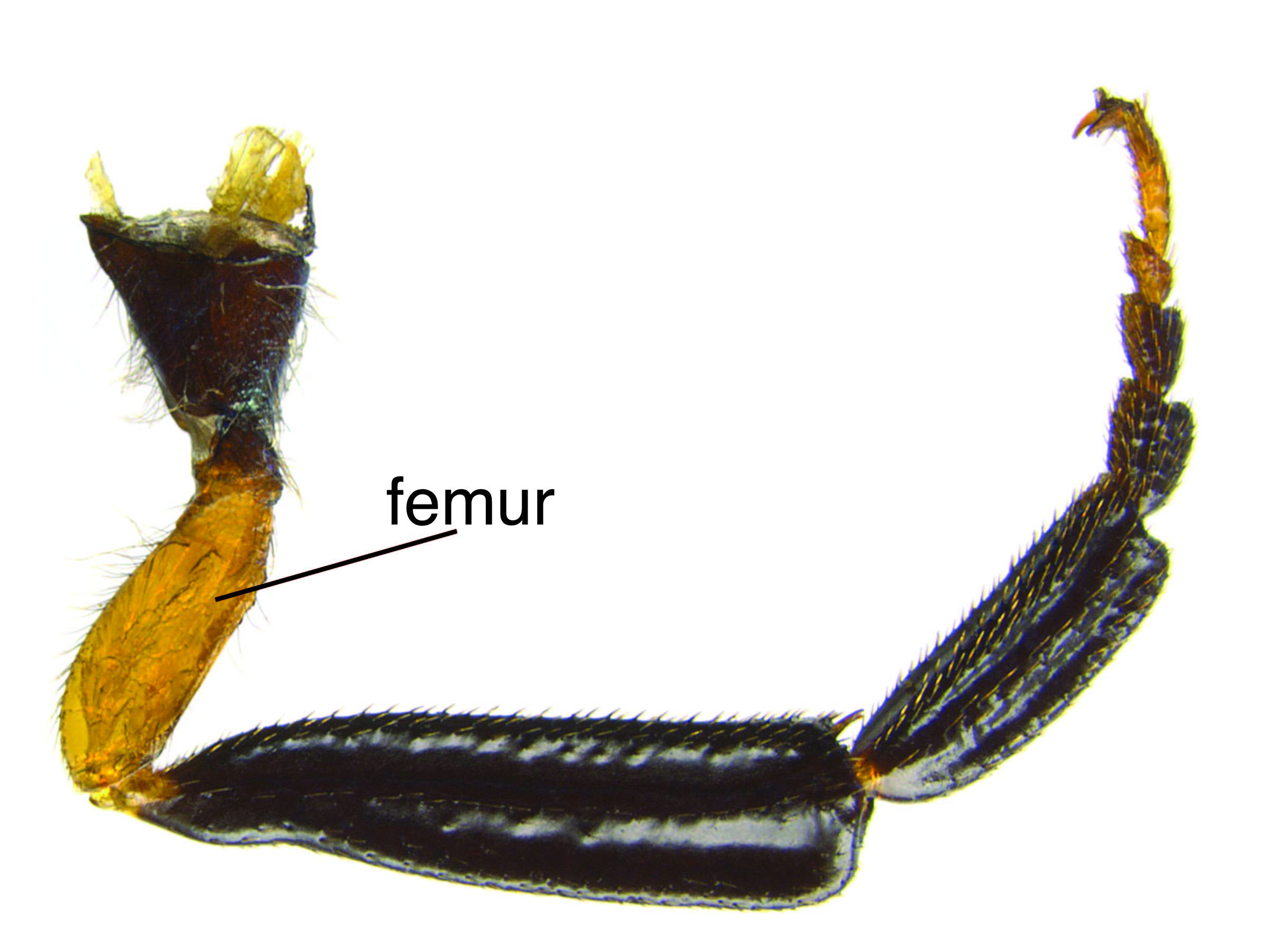 black (Schiff et al. 2012Schiff et al. 2012:
black (Schiff et al. 2012Schiff et al. 2012: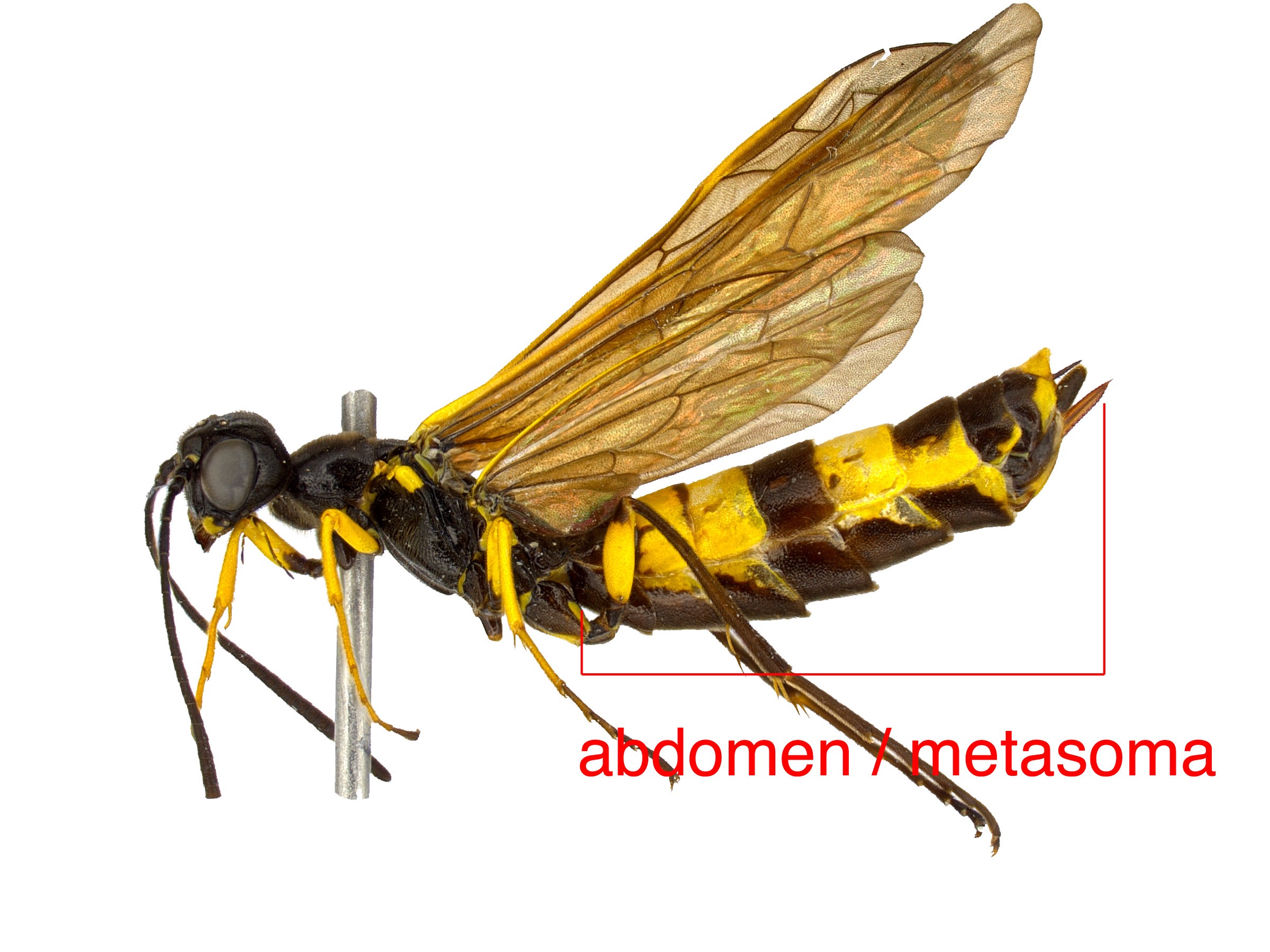 mostly reddish-brown (Schiff et al. 2012Schiff et al. 2012:
mostly reddish-brown (Schiff et al. 2012Schiff et al. 2012: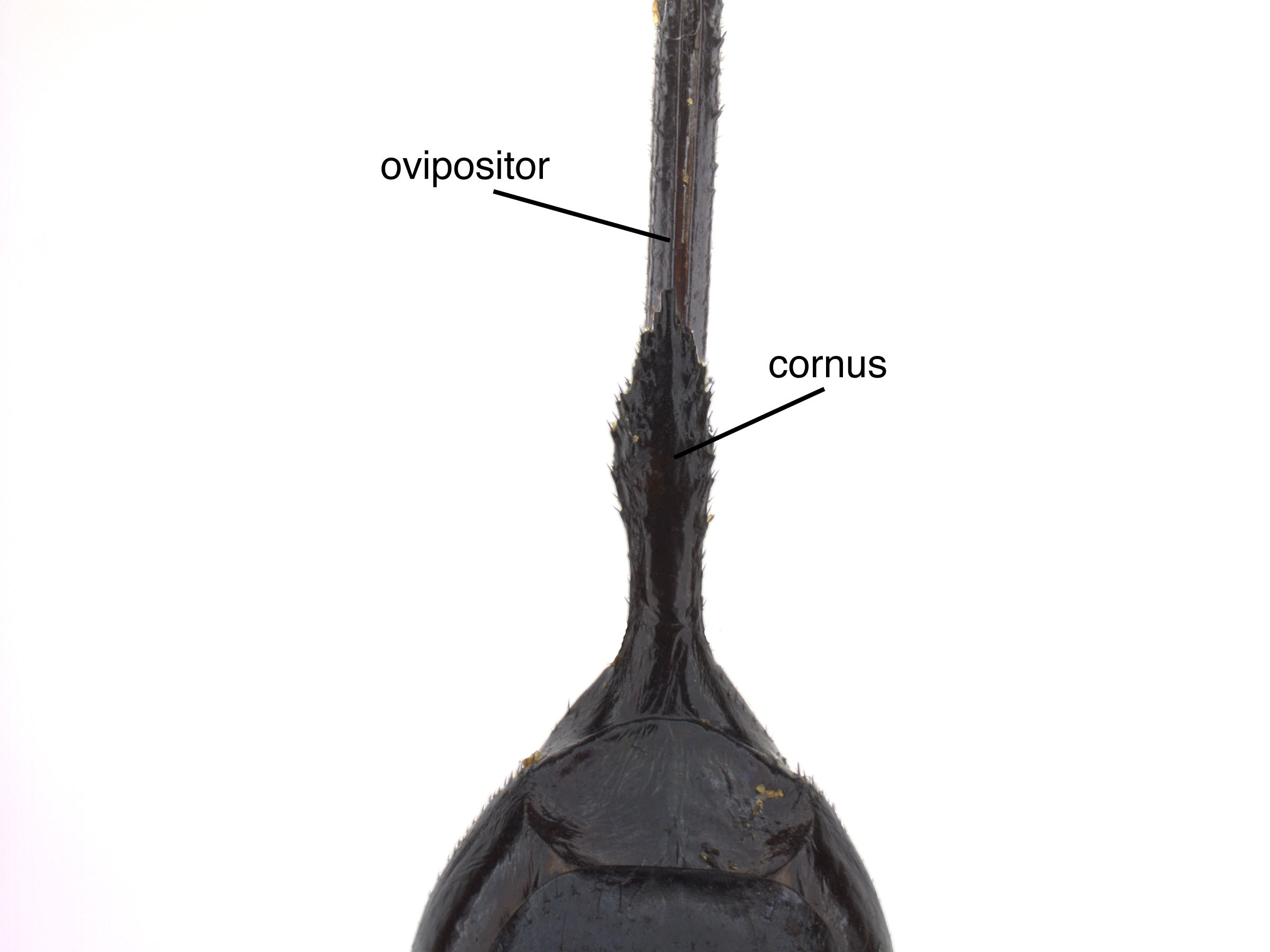 reddish-brown (Schiff et al. 2012Schiff et al. 2012:
reddish-brown (Schiff et al. 2012Schiff et al. 2012: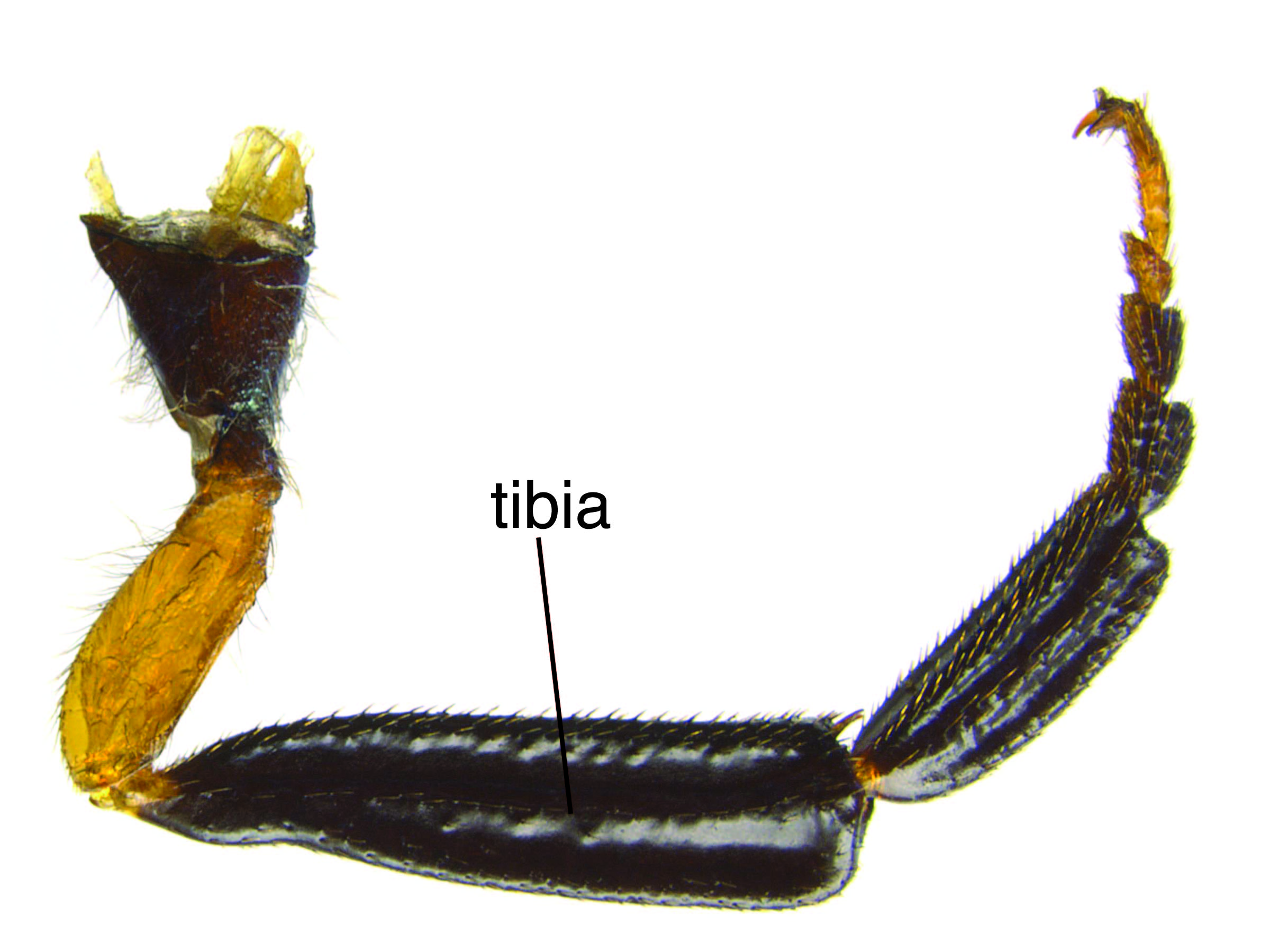 and tarsitarsus:
and tarsitarsus: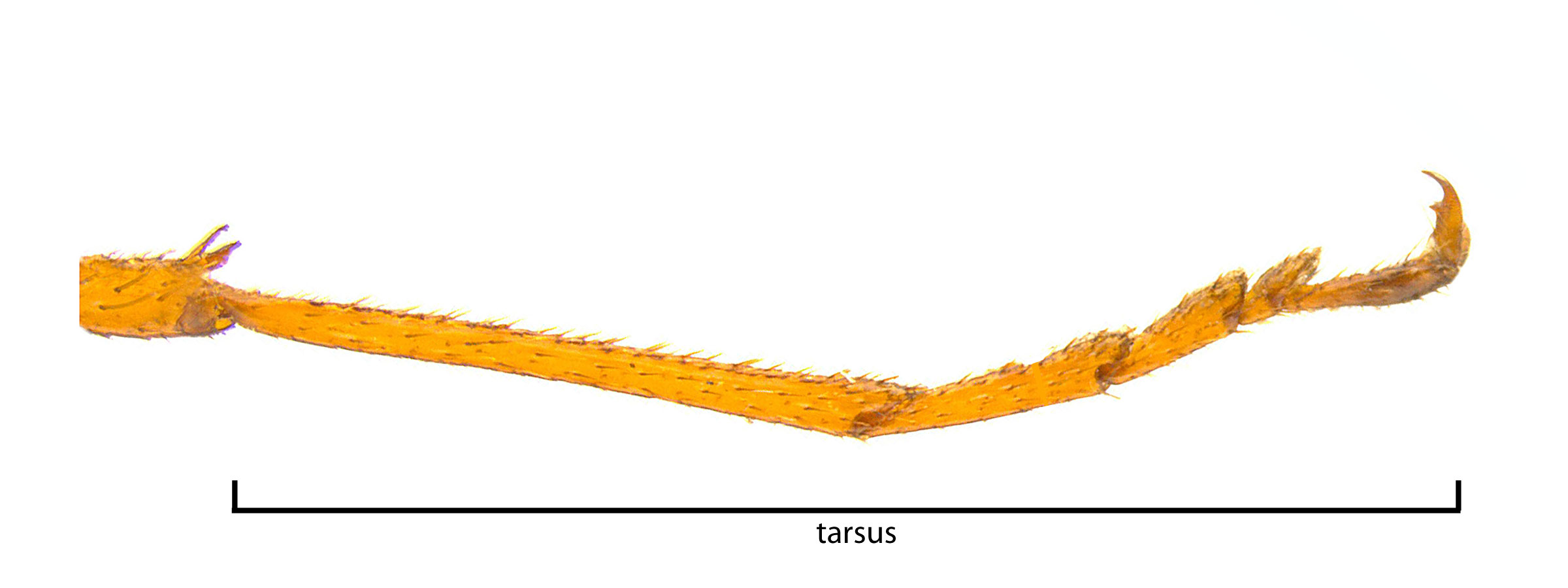 dark brown or black (Schiff et al. 2012Schiff et al. 2012:
dark brown or black (Schiff et al. 2012Schiff et al. 2012: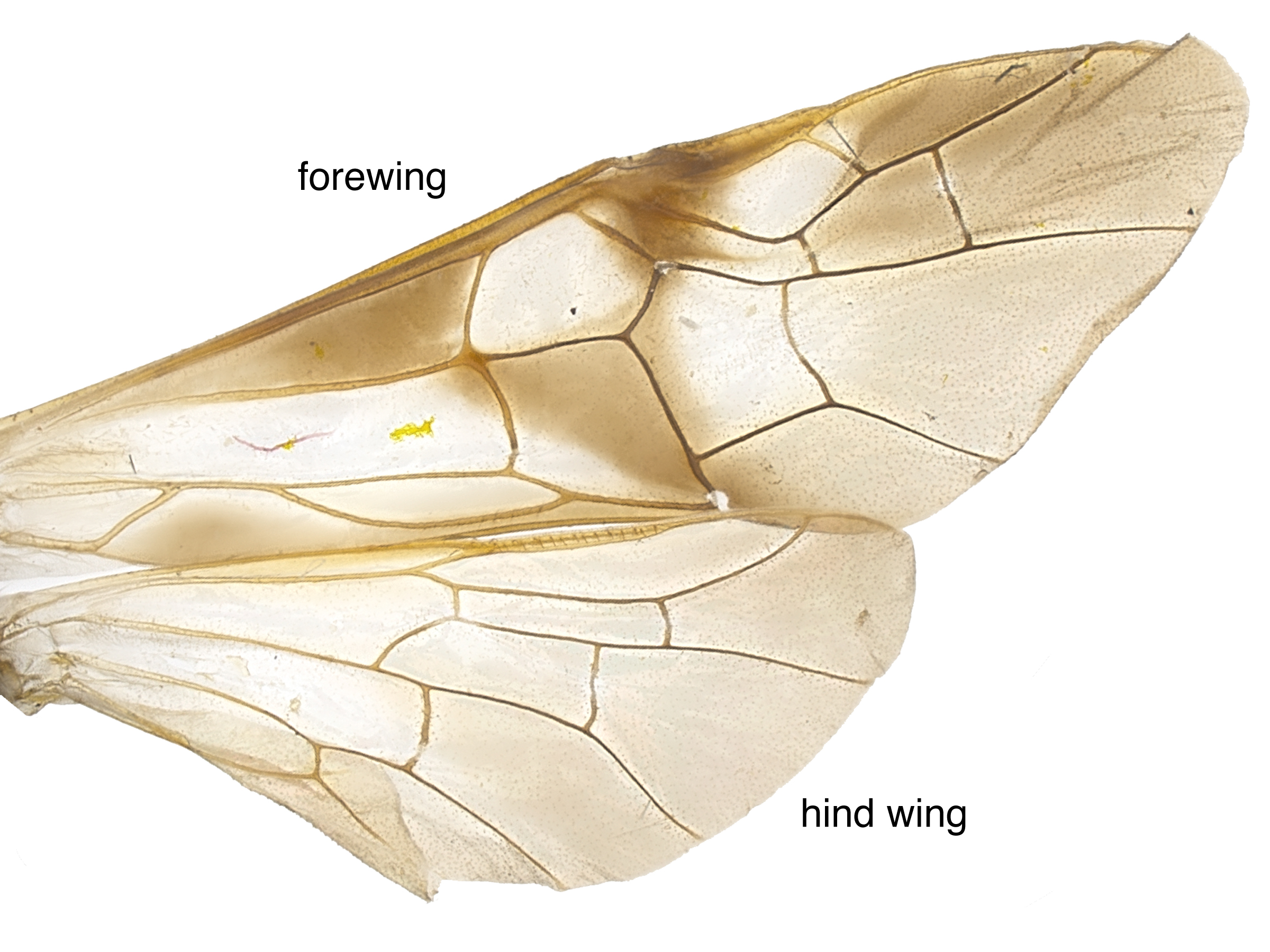 vein 3A present
vein 3A present pits scattered, about 4–8 pit diameters apart (Schiff et al. 2012Schiff et al. 2012:
pits scattered, about 4–8 pit diameters apart (Schiff et al. 2012Schiff et al. 2012: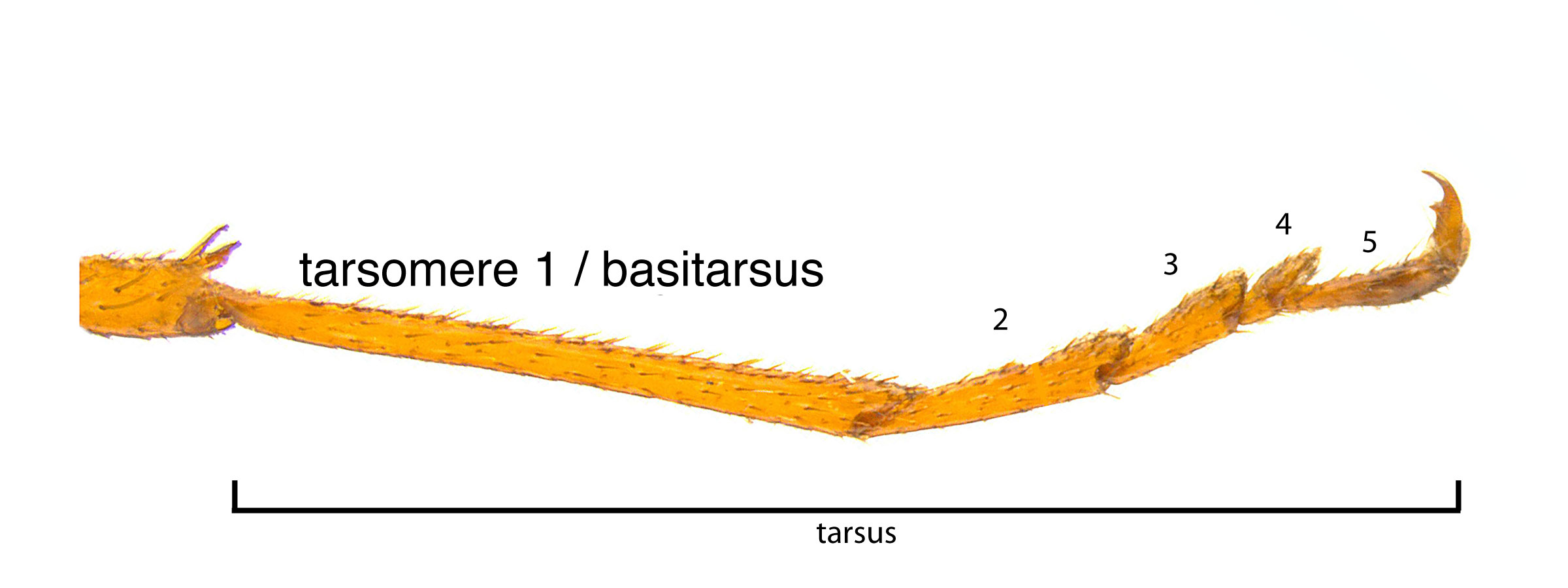 2.4–3 times as long as wide (Schiff et al. 2012Schiff et al. 2012:
2.4–3 times as long as wide (Schiff et al. 2012Schiff et al. 2012: pits dense, forming a few transverse ridges (Schiff et al. 2012Schiff et al. 2012:
pits dense, forming a few transverse ridges (Schiff et al. 2012Schiff et al. 2012: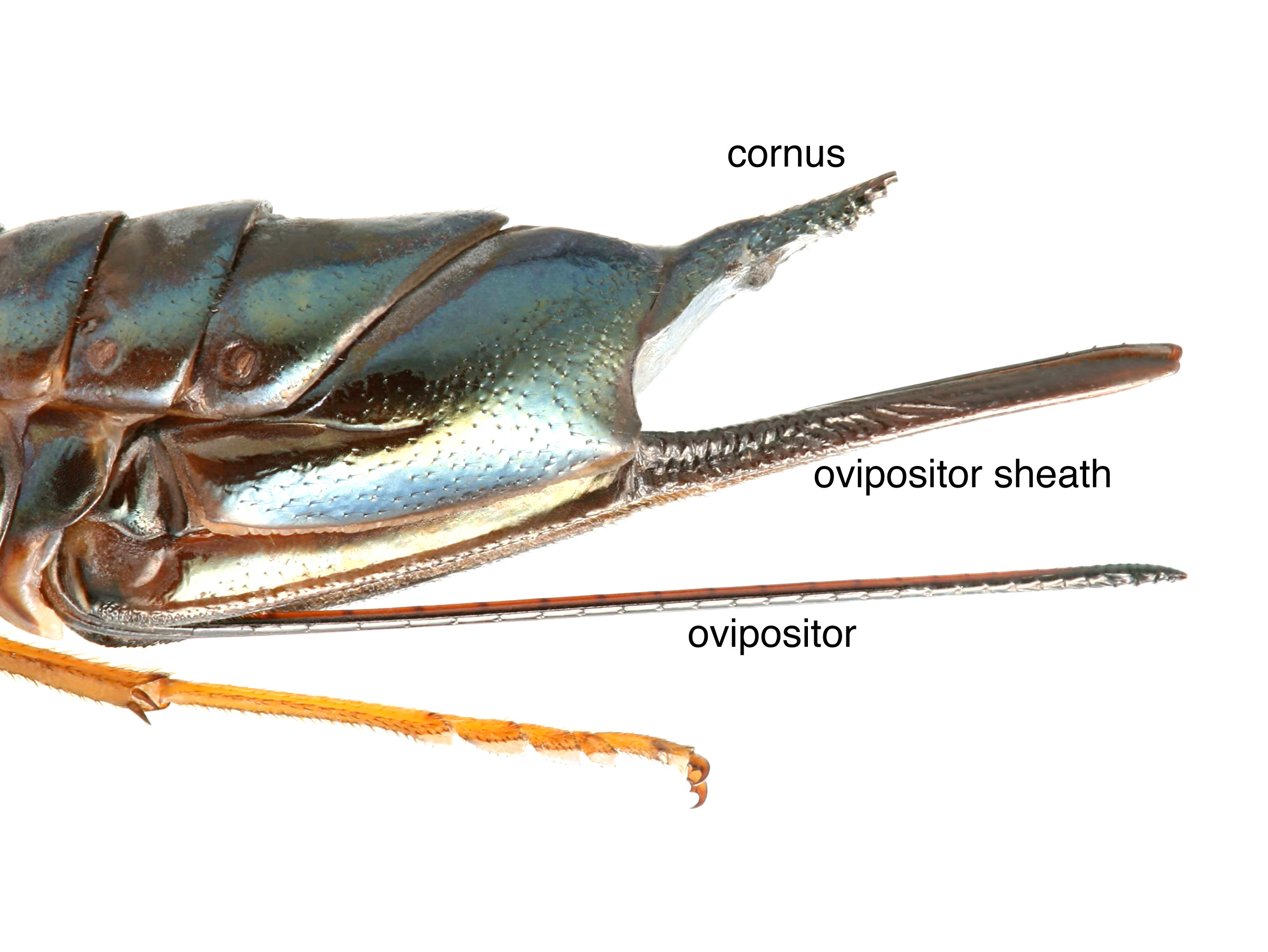 with very small pits at the basebase:
with very small pits at the basebase: with pulvilluspulvillus:
with pulvilluspulvillus: 0.4–0.5 times length of tarsomeretarsomere:
0.4–0.5 times length of tarsomeretarsomere: (Schiff et al. 2012Schiff et al. 2012:
(Schiff et al. 2012Schiff et al. 2012:Males:
 reddish-brown with black often on dorsaldorsal:
reddish-brown with black often on dorsaldorsal: with a large brown spot (Schiff et al. 2012Schiff et al. 2012:
with a large brown spot (Schiff et al. 2012Schiff et al. 2012: pits dense and somewhat large (Schiff et al. 2012Schiff et al. 2012:
pits dense and somewhat large (Schiff et al. 2012Schiff et al. 2012:Sirex behrensii females can be distinguished from the pale form of S. nigricornis by the dark bands on the wing, veinvein:
a tube-like, often darkened, structure on the wings
 3A, and a light-colored cornuscornus:
3A, and a light-colored cornuscornus:
a pointed horn-like process on the apical end of the abdomen in Siricidae sawflies; on tergite 10 in females, sternite 9 in males
 . The males can be recognized by the brown spot on the genagena:
. The males can be recognized by the brown spot on the genagena:
the area of the head between the compound eye and clypeus; also called the cheek
 , the coloring of the legs, and the antennaeantenna:
, the coloring of the legs, and the antennaeantenna:
the sensory organ emerging from the front of the head, usually between the compound eyes and above the clypeus; includes the flagellum, scape and pedicel
 (Schiff et al. 2012Schiff et al. 2012:
(Schiff et al. 2012Schiff et al. 2012:
Schiff NM, Goulet H, Smith DR, Boudreault C, Wilson AD, and Scheffler BE. 2012. Siricidae (Hymenoptera: Symphyta: Siricoidea) of the Western Hemisphere. Canadian Journal of Arthropod Identification 21: 1-305.).
none recorded
Sirex behrensii is recorded mainly on species of Pinaceae: Pinus jeffreyi (Jeffrey pine), Pinus lambertiana (sugar pine), Pinus ponderosa (ponderosa pine), Pinus radiata (Monterey pine), and Pseudotsuga menziesii (Douglas fir). Additionally there is one record from Cupressus macrocarpa (Monterey cypress) (Schiff et al. 2012Schiff et al. 2012:
Schiff NM, Goulet H, Smith DR, Boudreault C, Wilson AD, and Scheffler BE. 2012. Siricidae (Hymenoptera: Symphyta: Siricoidea) of the Western Hemisphere. Canadian Journal of Arthropod Identification 21: 1-305.).
Female Sirex harbor symbiotic basidiomycete fungus in abdominal glands called mycangia. During oviposition, the site is inoculated with the fungus, which begins to decompose the surrounding wood. LarvaeLarva:
the immature stage of holometabolous insects
 feed on the fungus, and in the process bore galleries through the wood (Johnson 1930Johnson 1930:
feed on the fungus, and in the process bore galleries through the wood (Johnson 1930Johnson 1930:
Johnson CW. 1930. On the variation and abundance of Sirex nitidus Harris. Psyche 37 (3): 281-282. https://doi.org/10.1155/1930/62786, Schiff et al. 2012Schiff et al. 2012:
Schiff NM, Goulet H, Smith DR, Boudreault C, Wilson AD, and Scheffler BE. 2012. Siricidae (Hymenoptera: Symphyta: Siricoidea) of the Western Hemisphere. Canadian Journal of Arthropod Identification 21: 1-305.). It is unknown what species of fungus is harbored by the mycangia of S. behrensii individuals, though based on other Sirex species, the fungus is likely Amylostereum areolatum or A. chailletii (Hajek et al. 2013Hajek et al. 2013:
Hajek AE, Nielsen C, Kepler RM, Long SJ, and Castrillo L. 2013. Fidelity among Sirex woodwasps and their fungal symbionts. Microbial Ecology 65: 753-762. https://doi.org/10.1007/s00248-013-0218-z).
Larvae are creamy white and grub-like in appearance with a dark head capsule. As with adults, larvaelarva:
the immature stage of holometabolous insects
 possess a short dorsaldorsal:
possess a short dorsaldorsal:
of or on the top surface of the body or structure
horn on the posterior end of the body. The larvaelarva:
the immature stage of holometabolous insects
 bore galleries into wood, feeding until pupation and subsequent emergence. Throughout this process, the larvaelarva:
bore galleries into wood, feeding until pupation and subsequent emergence. Throughout this process, the larvaelarva:
the immature stage of holometabolous insects
 use their horn to pack the tunnel behind them with sawdust. Emergence holes are perfectly circular. The fungal symbiont is carried in specialized organs in female larvaelarva:
use their horn to pack the tunnel behind them with sawdust. Emergence holes are perfectly circular. The fungal symbiont is carried in specialized organs in female larvaelarva:
the immature stage of holometabolous insects
 that develop into the mycangia after metamorphosis (Schiff et al. 2012Schiff et al. 2012:
that develop into the mycangia after metamorphosis (Schiff et al. 2012Schiff et al. 2012:
Schiff NM, Goulet H, Smith DR, Boudreault C, Wilson AD, and Scheffler BE. 2012. Siricidae (Hymenoptera: Symphyta: Siricoidea) of the Western Hemisphere. Canadian Journal of Arthropod Identification 21: 1-305.).
The documented flight period of S. behrensii is late July to late October, with a peak in September (Schiff et al. 2012Schiff et al. 2012:
Schiff NM, Goulet H, Smith DR, Boudreault C, Wilson AD, and Scheffler BE. 2012. Siricidae (Hymenoptera: Symphyta: Siricoidea) of the Western Hemisphere. Canadian Journal of Arthropod Identification 21: 1-305.).
A parasitoid wasp species, Ibalia leucospoides, has been recorded emerging from S. behrensii (Schiff et al. 2012Schiff et al. 2012:
Schiff NM, Goulet H, Smith DR, Boudreault C, Wilson AD, and Scheffler BE. 2012. Siricidae (Hymenoptera: Symphyta: Siricoidea) of the Western Hemisphere. Canadian Journal of Arthropod Identification 21: 1-305.).
World: North America
North America: The range of S. behrensii is restricted to the West Coast, with collections from southern British Columbia to California and Nevada. There are two collections farther east in Ohio and West Virginia, where the species is likely not established (Schiff et al. 2012Schiff et al. 2012:
Schiff NM, Goulet H, Smith DR, Boudreault C, Wilson AD, and Scheffler BE. 2012. Siricidae (Hymenoptera: Symphyta: Siricoidea) of the Western Hemisphere. Canadian Journal of Arthropod Identification 21: 1-305.).
Map data from Washington State Department of Agriculture Entomology Collection.
Details about data used for maps can be found here.